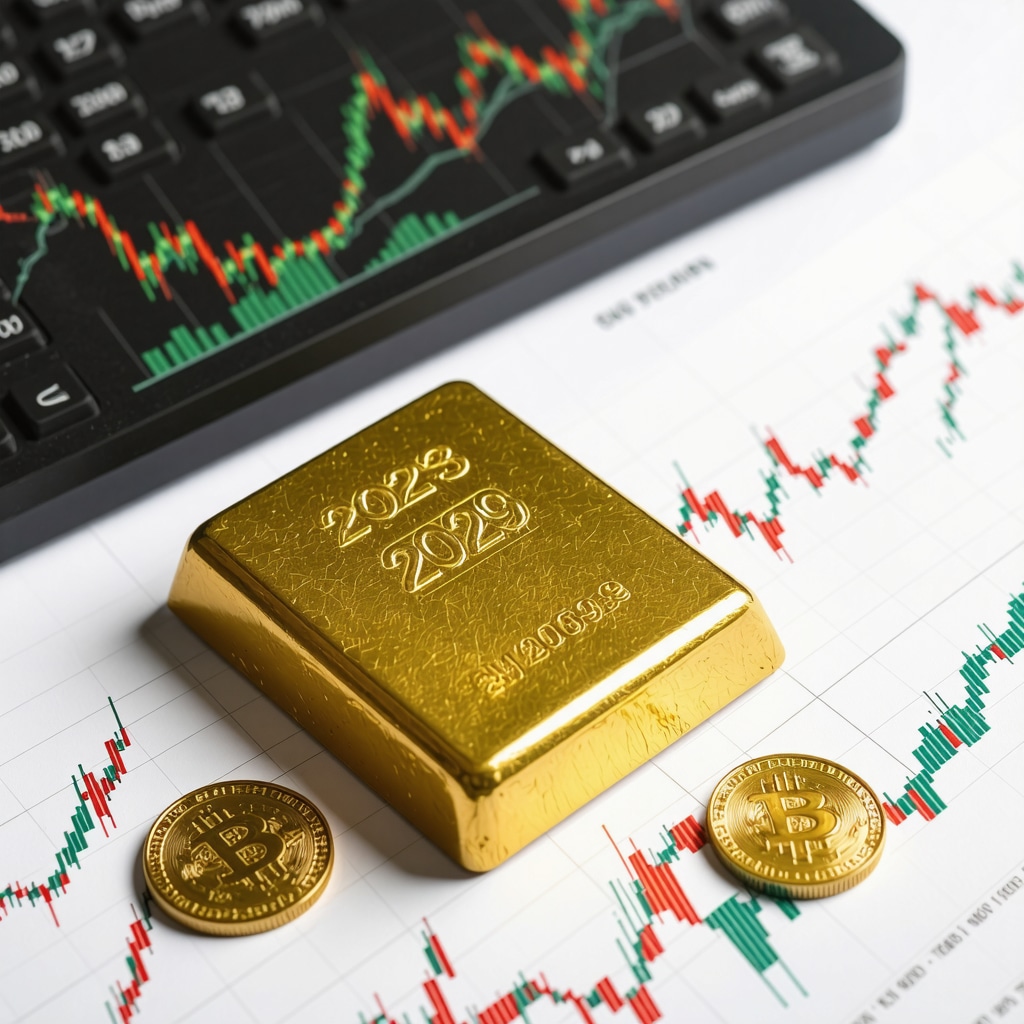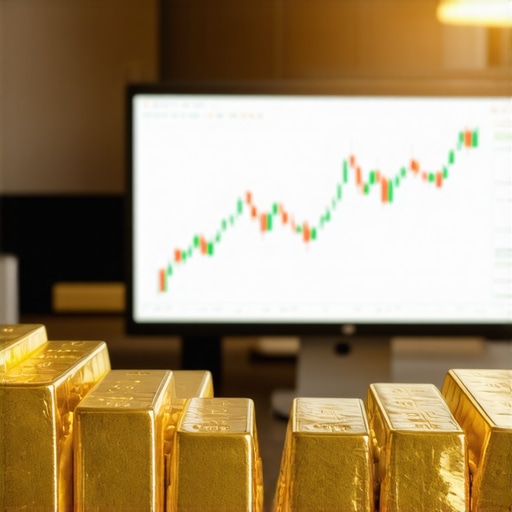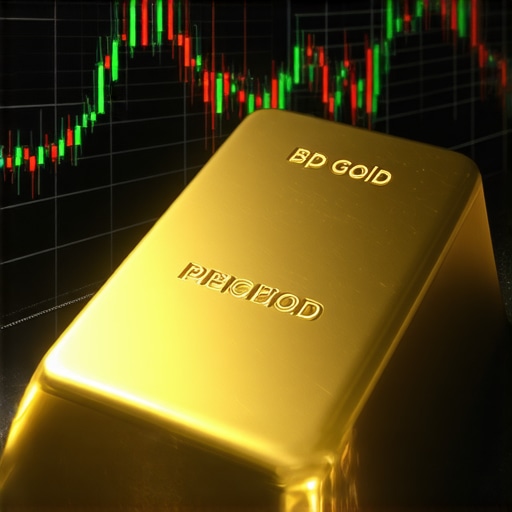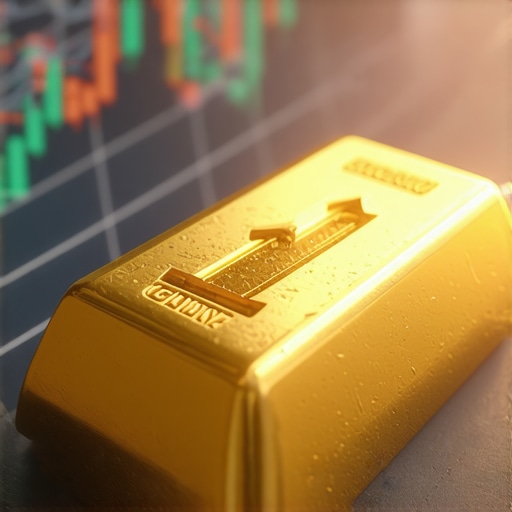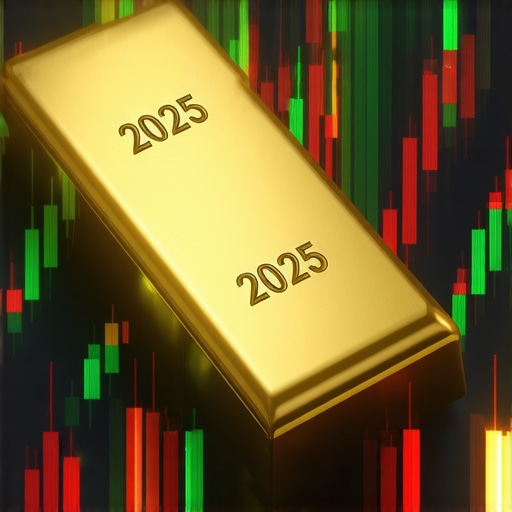Unlocking the Future: Why 2029 Could Be a Pivotal Year for Gold Prices
As global economies continue to evolve amid geopolitical uncertainty, inflationary pressures, and shifting monetary policies, investors are increasingly eyeing gold as a strategic asset. Forecasting the gold price in 2029 requires a nuanced understanding of multifaceted market forces and emerging trends that will influence its trajectory. This analysis dives deep into the critical factors impacting gold’s market value, offering investors expert insights grounded in experience and authoritative data.
Geopolitical Tensions and Economic Uncertainty: The Ever-Present Safeguards for Gold
Historically, gold has served as a safe haven during times of crisis. With ongoing geopolitical conflicts and economic volatility expected to persist into 2029, demand for gold as a protective asset is likely to strengthen. For instance, previous surges in gold prices often coincided with heightened tensions or economic downturns, underscoring gold’s role as a hedge against market instability. Investors should consider how potential disruptions, such as trade wars or regional conflicts, may amplify gold’s appeal as a store of value.
Central Bank Gold Purchases: The Silent Sculptors of Supply and Demand
One of the most influential yet sometimes overlooked factors is the pattern of central bank gold acquisitions. Increasingly, central banks have been bolstering their gold reserves to diversify away from fiat currencies and bolster financial stability. According to recent reports from the World Gold Council, central bank buying has been a dominant driver behind gold’s upward momentum in recent years. This trend is projected to continue into 2029, shaping the global supply landscape and exerting upward pressure on prices. Understanding how central bank gold purchases influence global supply is essential for anticipating price movements.
Technological Innovations and Emerging Market Demand: New Frontiers for Gold Consumption
Beyond traditional investment and jewelry demand, emerging technologies such as electronics and green energy applications are increasingly utilizing gold due to its superior conductivity and corrosion resistance. Moreover, the rapid economic growth and rising wealth in emerging markets, particularly in Asia, continue to fuel consumer demand for physical gold. These dynamics not only augment demand but also introduce complexities in forecasting supply-demand equilibrium for 2029.
How Do Inflation and Monetary Policy Shape Gold’s Long-Term Outlook?
Inflation trends and central bank policies remain pivotal in determining gold’s price direction. Historically, when inflation outpaces interest rates, gold tends to outperform due to its intrinsic value retention. As central banks navigate tightening or easing cycles, the opportunity cost of holding gold fluctuates, influencing investor appetite. For example, sustained low real interest rates may incentivize increased gold investment, whereas rising rates could temper enthusiasm. Analyzing these macroeconomic indicators with a forward-looking lens enables investors to better position their portfolios for 2029.
Harnessing Expert Strategies: Navigating Gold Investments Toward 2029
Given these varied and interlinked factors, savvy investors should diversify their gold holdings, balancing physical bullion, ETFs, mutual funds, and mining stocks to optimize exposure. For those interested in gold mutual funds offering reliable income streams, this guide provides a comprehensive overview. Additionally, staying informed about gold demand trends in emerging markets can offer early signals for price shifts (explore detailed insights here).
Engage with us: What are your thoughts on gold’s future amid these complex factors? Share your perspectives in the comments below and join a community of informed investors navigating the 2029 gold market landscape.
For further authoritative insights on gold price dynamics, consult the World Gold Council’s latest market analysis — a trusted resource for gold investors globally.
Personal Reflections on Gold’s Resilience Amid Market Fluctuations
Reflecting on my own investment journey, gold has often felt like that steady friend during turbulent times—reliable, tangible, and comforting. I recall during the 2008 financial crisis, physical gold bars I had acquired not only preserved value but also provided peace of mind when stocks were plummeting. Fast forward to today, the evolving factors influencing gold prices continue to fascinate me, especially as we approach 2029. The blend of geopolitical uncertainty, central bank policies, and burgeoning demand from new technologies keeps gold a dynamic asset, not just a relic of the past.
Balancing Physical Gold With Modern Investment Vehicles
While owning physical gold has its undeniable charm and security, I’ve learned that diversifying into gold ETFs and mutual funds can offer liquidity and professional management that physical holdings lack. For instance, gold mutual funds can provide steady income streams and exposure to the overall gold market without the need to worry about storage or authenticity. If you’re curious about this balance, this guide on gold mutual funds offers practical insights tailored for 2029 investors. Blending physical and paper gold investments has helped me navigate market swings more comfortably.
How Can Emerging Market Trends Help Us Predict Gold’s Trajectory?
One question I often ponder is how the rising middle class in emerging markets will impact gold demand and prices. Countries like India and China have long cultural ties to gold, and as wealth increases, so does consumption. According to the World Gold Council, these markets are expected to remain significant drivers for physical gold demand in 2029 and beyond (source). This surge not only supports price stability but could also create new price peaks during festive or wedding seasons when gold buying spikes. It’s a fascinating intersection of culture, economy, and investment.
Lessons From Past Gold Price Cycles That Still Apply Today
Observing gold’s price history has taught me the importance of patience and timing. The metal rarely offers quick windfalls; instead, it rewards strategic holding during inflationary periods or geopolitical unrest. For example, during the 2010-2012 period, gold prices soared as global uncertainty peaked, only to correct later. Recognizing these cycles has helped me avoid panic selling and instead focus on long-term potential.
Practical Advice for Safely Buying Physical Gold in 2029
If you’re considering physical gold investment, safety is paramount. From my experience, purchasing from trusted dealers who provide transparent certifications is non-negotiable. I recommend checking out resources like the gold bars buying guide which outlines how to verify authenticity and avoid scams. Additionally, secure storage solutions—whether a home safe or a bank safety deposit box—are crucial to protect your assets.
Your Turn: How do you see the role of gold evolving in your investment portfolio as 2029 approaches? Are you leaning more towards physical gold, ETFs, or mutual funds? Share your experiences or questions below—let’s learn from each other’s journeys and insights.
Decoding Complex Macroeconomic Signals: The Subtle Art of Predicting Gold Prices in 2029
Forecasting gold prices for 2029 demands more than just surface-level analysis; it requires a deep dive into the intricate interplay of macroeconomic indicators such as real interest rates, currency fluctuations, and global debt trajectories. Real interest rates, in particular, serve as a critical barometer — when these rates turn negative or remain subdued, gold’s allure as a non-yielding asset intensifies, encouraging investment inflows. Moreover, the US dollar’s strength inversely correlates with gold prices, accentuating the metal’s role as a currency hedge in times of dollar depreciation.
Adding to this complexity, burgeoning global debt levels, especially in advanced economies, could precipitate inflationary pressures or currency debasement, further bolstering gold’s appeal. Investors and analysts who adeptly parse these signals, incorporating advanced econometric models and sentiment analysis, can better anticipate price inflections and position their portfolios accordingly.
What Advanced Analytical Tools Can Investors Use to Forecast Gold Price Movements Amid Macroeconomic Volatility?
Beyond traditional fundamental analysis, sophisticated investors increasingly leverage machine learning algorithms and high-frequency data analytics to capture subtle market shifts impacting gold prices. Tools such as natural language processing (NLP) scan geopolitical news feeds and central bank communications to quantify market sentiment. Concurrently, time-series forecasting models including ARIMA and GARCH help model price volatility and trend persistence, offering probabilistic price ranges rather than deterministic predictions.
These technologies complement classical indicators by revealing latent market dynamics and enhancing predictive accuracy. For example, a sudden spike in geopolitical risk indices detected via NLP could signal imminent gold price rallies before traditional metrics register changes. Integrating these tools demands expertise but offers a competitive edge in navigating the multifaceted gold market environment expected through 2029.
Supply Chain Disruptions and Mining Innovations: The Hidden Variables in Gold’s 2029 Price Equation
While demand-side factors often dominate discourse, supply-side nuances—especially related to mining operations and supply chain integrity—are equally pivotal. Mining output forecasts for 2029 must account for both geological constraints and technological breakthroughs. Recent advancements in extraction technologies, including bioleaching and automation, promise to lower production costs and marginally increase output, potentially tempering price surges.
Conversely, supply chain vulnerabilities exposed by global events such as pandemics or geopolitical embargoes can curtail physical gold availability, tightening markets and driving prices upward. The interplay between these opposing forces creates a dynamic supply environment that sophisticated investors need to monitor closely, adjusting strategies as new data emerge.
Environmental, Social, and Governance (ESG) Considerations: Emerging Influencers on Gold Investment Patterns
Increasingly, ESG factors are reshaping investment flows across asset classes, including gold. Mining companies adhering to stringent environmental and social governance standards are attracting premium valuations and investor interest. Conversely, projects with poor ESG credentials face financing challenges and potential operational delays, affecting gold supply timelines.
Moreover, the growing trend of sustainable investing is influencing demand for responsibly sourced gold, with certifications like the Responsible Jewellery Council (RJC) gaining prominence. Investors integrating ESG criteria into their gold portfolios may find enhanced risk-adjusted returns and alignment with broader ethical mandates, signaling a transformative shift in how gold markets operate by 2029.
For those eager to deepen their understanding of ESG impacts on gold markets, the World Gold Council’s Responsible Gold Mining report provides an authoritative resource.
Your Next Step: Dive into these advanced analytical frameworks and ESG considerations to refine your gold investment approach for 2029. Engage with our expert community by sharing your strategies or questions in the comments below — together, we can navigate the complexities of gold’s evolving landscape.
Leveraging Cutting-Edge Quantitative Models to Anticipate Gold Price Dynamics
In the sophisticated arena of gold price forecasting, merely tracking traditional economic indicators no longer suffices. Advanced quantitative models integrating machine learning techniques have emerged as powerful tools for decoding the complex, nonlinear relationships governing gold’s valuation. Techniques such as ensemble learning and deep neural networks enable analysts to assimilate diverse data streams — including macroeconomic variables, geopolitical event probabilities, and market sentiment indices — into coherent predictive frameworks. These models can detect subtle precursors to price shifts that human intuition might overlook, thereby offering a tangible advantage in timing market entries and exits.
Moreover, sentiment analysis powered by natural language processing (NLP) algorithms scans real-time central bank communications, financial news, and social media channels to quantify the prevailing investor mood toward gold. This dynamic sentiment gauge acts as an early warning system for potential volatility or rallies, complementing fundamental analyses. As the gold market approaches 2029, investors embracing these computationally intensive approaches may better navigate uncertainty and capitalize on emerging trends.
How Can ESG Integration Influence Gold Mining Investment Returns and Market Stability?
Environmental, Social, and Governance (ESG) criteria are no longer peripheral considerations but central to investment decision-making in the gold sector. Mining companies that proactively adopt rigorous ESG standards often exhibit enhanced operational resilience, lower regulatory risks, and improved community relations. These factors contribute to more stable cash flows and can translate into superior long-term shareholder returns. Conversely, neglecting ESG aspects can precipitate project delays, reputational damage, and divestment pressures, ultimately constraining supply and inflating gold prices.
According to the World Gold Council’s Responsible Gold Mining report, firms with robust ESG frameworks are increasingly favored by institutional investors seeking sustainable assets, thus influencing capital allocation patterns within the sector. This evolving paradigm suggests that ESG-compliant mining operations could underpin a more stable and ethically aligned gold supply chain by 2029, impacting both investment risk profiles and price formation mechanisms.
Strategic Responses to Supply Chain Disruptions and Mining Innovation Challenges
The gold supply landscape is poised to confront multifaceted challenges, from geopolitical embargoes to resource nationalism, which could disrupt traditional mining and distribution channels. However, emergent innovations such as bioleaching technology and autonomous robotic mining present promising avenues to mitigate production bottlenecks and environmental footprints. Integrating these advancements requires significant capital expenditure but promises operational efficiencies and resilience against labor shortages or pandemic-induced interruptions.
Investors tracking these technological trajectories must consider their potential to modulate supply elasticity and, by extension, influence price volatility. A nuanced understanding of how these factors intersect with global demand trends will be essential to formulate sophisticated investment strategies for 2029.
Engage With Us: Are you utilizing machine learning models or integrating ESG criteria into your gold investment decisions? Share your insights or queries below and connect with a community of experts committed to mastering the complexities of the 2029 gold market.

Frequently Asked Questions (FAQ)
Why is gold considered a safe haven asset during geopolitical and economic uncertainty?
Gold has historically preserved value when other assets falter due to its intrinsic scarcity, universal acceptance, and independence from any single currency or government. During geopolitical tensions or economic crises, investors flock to gold to hedge against volatility, inflation, and currency devaluation, reinforcing its role as a reliable store of value.
How do central bank gold purchases affect the gold price outlook for 2029?
Central banks buy gold to diversify reserves, reduce exposure to fiat currency risks, and signal financial stability. Increased acquisitions reduce available supply in the market while signaling confidence, often exerting upward pressure on prices. The sustained trend of central bank buying is expected to continue influencing gold’s supply-demand balance and price trajectory through 2029.
What role do emerging technologies and market demand play in shaping gold consumption?
Gold’s unique properties—excellent conductivity and corrosion resistance—make it vital in electronics, medical devices, and green technologies such as solar panels. Moreover, growing wealth in emerging economies boosts demand for physical gold in jewelry and investment. These factors collectively expand gold’s consumption beyond traditional uses, complicating price forecasts but generally supporting demand growth.
How do inflation and real interest rates influence gold prices over the long term?
Gold is a popular hedge against inflation, especially when real interest rates (interest rates adjusted for inflation) are low or negative, reducing the opportunity cost of holding non-yielding gold. When inflation outpaces returns on bonds or savings, investors turn to gold to preserve purchasing power, often driving prices higher in the medium to long term.
What advanced analytical tools are available to forecast gold prices amid macroeconomic volatility?
Investors increasingly use machine learning algorithms, natural language processing (NLP) for sentiment analysis, and time-series models like ARIMA and GARCH to anticipate gold price movements. These tools analyze complex data — including geopolitical news, central bank statements, and market volatility — to provide probabilistic forecasts that enhance decision-making beyond traditional fundamental analysis.
How do Environmental, Social, and Governance (ESG) factors impact gold mining and investment returns?
ESG integration is becoming central in gold mining, where companies with strong ESG practices tend to have better operational resilience, lower risks, and attract more institutional investment. Responsible mining can stabilize supply by avoiding disruptions and reputational damage, potentially improving long-term returns and aligning investments with ethical standards.
What supply-side challenges and innovations might affect gold availability and pricing by 2029?
Supply disruptions from geopolitical issues, pandemics, or resource nationalism can constrain gold availability, pushing prices up. Conversely, innovations like bioleaching and automation improve extraction efficiency and reduce costs, potentially increasing supply. The balance of these factors creates a dynamic supply environment that investors must monitor closely.
Should investors prioritize physical gold or modern investment vehicles like ETFs and mutual funds?
Both have merits: physical gold offers tangible security and cultural value, while ETFs and mutual funds provide liquidity, diversification, and professional management. A balanced portfolio that incorporates both can optimize exposure, manage risks, and adapt to changing market conditions leading up to 2029.
How might emerging market trends influence gold’s price trajectory?
Rising incomes and cultural affinity for gold in emerging markets, especially India and China, drive sustained physical gold demand. Seasonal buying during festivals and weddings further amplifies this demand, potentially creating price spikes. Understanding these consumption patterns is key to anticipating price dynamics in the coming years.
What practical steps should investors take to safely buy and store physical gold?
Purchasing from reputable dealers with transparent certifications is critical to avoid fraud. Verifying authenticity and understanding market premiums help ensure fair pricing. For storage, secure options include home safes with adequate protection or bank safety deposit boxes. Following trusted guides and best practices minimizes risks associated with physical gold ownership.
Trusted External Sources
- World Gold Council (WGC): The WGC provides comprehensive research, market analysis, and data on gold demand, supply, and investment trends globally, making it an authoritative resource for gold price forecasting and ESG considerations. (gold.org)
- International Monetary Fund (IMF): Offers macroeconomic data, monetary policy reports, and insights into central bank gold reserves, vital for understanding the monetary factors influencing gold prices. (imf.org)
- Bloomberg Terminal and Financial Data Providers: Provide real-time market data, sentiment indicators, and access to advanced analytics tools such as machine learning models and NLP-based sentiment scores used by professionals to forecast gold price movements.
- Responsible Jewellery Council (RJC): Sets standards and certifications for responsible gold sourcing, helping investors evaluate ESG credentials of mining operations and refine investment risk assessments. (responsiblejewellery.com)
- Scientific Journals on Mining Technology and Environmental Studies: Peer-reviewed research on bioleaching, automation, and sustainable mining practices informs supply-side innovations and ESG impacts on gold mining industry dynamics.
Conclusion
As we approach 2029, forecasting gold prices demands a holistic, expert view that integrates geopolitical dynamics, central bank behaviors, technological innovations, and evolving investor preferences shaped by ESG principles. Gold remains a resilient store of value amid economic uncertainty, buoyed by steady demand from emerging markets and expanding industrial applications. Advanced analytics, including machine learning and sentiment analysis, offer valuable lenses to navigate the complex influences on gold’s price path.
Investors who blend physical holdings with modern investment vehicles and incorporate ESG criteria will be better positioned to manage risks and seize opportunities in a shifting market landscape. By understanding both demand-side trends and nuanced supply-side factors — alongside drawing lessons from past cycles — market participants can craft informed, strategic approaches to gold investing as 2029 unfolds.
Engage with this evolving conversation: share your perspectives, apply these insights in your portfolio, and explore related expert analyses to stay ahead in the dynamic gold market.






